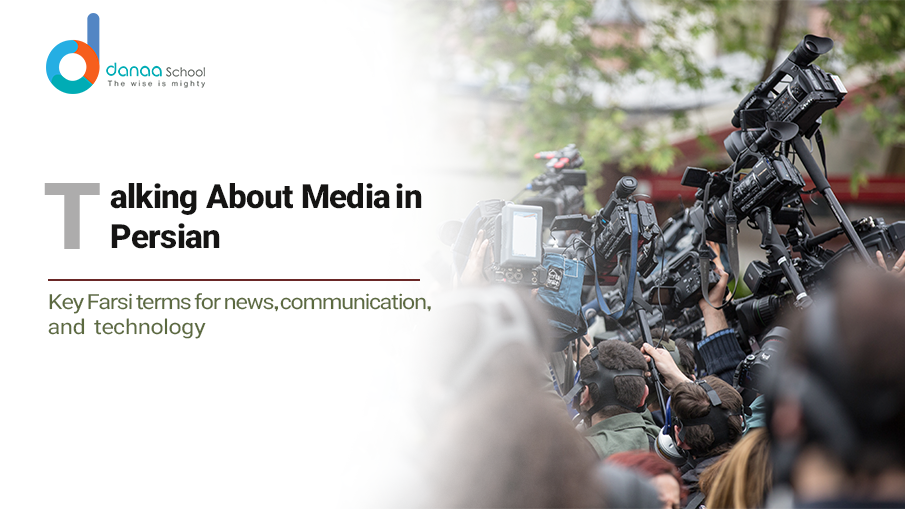Learning a new language can be daunting, but mastering pronunciation is crucial to fluency. When learning Persian, pronunciation plays a vital role in effective communication. Pronouncing words accurately not only helps native speakers understand you but also enhances your listening skills.
Persian has its unique sounds and phonetic system, so getting a solid grasp of Farsi pronunciation from the beginning is essential. In this guide, we will break down the rules of Persian pronunciation and provide tips to help you perfect your skills.
Understanding the Persian Alphabet and Sounds
Before diving into Farsi pronunciation, familiarize yourself with the Persian alphabet. It consists of 32 letters, including vowels and consonants. The good news is that the Persian script is phonetic, meaning each letter represents a specific sound.
This simplifies the process of learning pronunciation compared to languages with complex spelling systems. Take time memorizing the alphabet and associating each letter with its sound.
Pronunciation Rules and Guidelines
Once you are comfortable with the Persian alphabet, understanding the pronunciation rules will help you navigate the language more smoothly. Persian pronunciation follows certain guidelines, such as the stress falling on the last syllable of words and the absence of vowel reductions.
However, there are exceptions and variations to these rules, which we’ll explore in more detail throughout this guide. Attention to these rules will lay a strong foundation for your Persian pronunciation.
Mastering Vowel Sounds in Persian
Persian Vowel Sounds and Their Pronunciation
Vowels are an essential aspect of Persian pronunciation. Understanding and correctly pronouncing Persian vowel sounds can significantly improve your spoken fluency. Persian has six vowel letters, and each has its distinct pronunciation.
These vowel sounds include short and long versions; mastering their differences is key to sounding more natural in conversations.
Tips for Distinguishing Between Similar Vowel Sounds
Sometimes, distinguishing between similar vowel sounds in Persian can be challenging for beginners. However, with a few tricks, you’ll conquer this hurdle quickly. We’ll share some practical tips and techniques to help you differentiate between similar vowel sounds. From understanding subtle differences in pronunciation to using visual aids, these strategies will boost your ability to accurately identify and produce Persian vowel sounds.
Conquering Consonant Sounds in Persian
Consonants are the building blocks of words, and mastering Persian consonant sounds is crucial for clear pronunciation. Persian has its distinct set of consonants, some of which may be familiar to English speakers.
In contrast, others require a bit of practice. We’ll explore the pronunciation of common Persian consonants and guide you through producing the correct sounds. Understanding how to articulate each consonant will drastically improve your ability to pronounce Persian words accurately.
Pronouncing Persian Words and Syllables Correctly
When pronouncing Persian words and syllables, it’s important to understand the language’s unique structures and patterns.
Syllable Structure in Persian Pronunciation
Persian syllables usually consist of a consonant followed by a vowel. However, there are some cases where two consonants can appear together at the beginning of a syllable. Please don’t worry; it’s not as complicated as it sounds!
Common Pronunciation Challenges and How to Overcome Them
Handling the “gh” Sound
That guttural, throaty sound can be a bit daunting at first. But fear not; with a little practice, you can master it. Start by making a “g” sound, like in the word “go.” Now, try to make the sound deeper and more raspy.
Tackling the Pronunciation of the Persian “r”
It’s unlike the English “r” or the rolled “r” in Spanish. The Persian “r” is a sound that sits somewhere in between. To get it right, place the tip of your tongue against the roof of your mouth, just behind your front teeth. Now, lightly vibrate your tongue as you pronounce the “r” sound. Initially, it might sound strange, but with practice, you’ll be rolling those Persian “r”s like a pro!
Dealing with Silent Letters in Persian Words
Silent letters can be tricky, especially when they seem to appear out of nowhere. In Persian, some letters are not pronounced but still impact the word’s pronunciation. The best way to handle this is to familiarize yourself with the common words with silent letters and practice saying them aloud. With time, you’ll become more aware of these silent letters and be able to pronounce them more naturally.
Tips and Exercises for Improving Farsi Pronunciation
Tongue twisters are not just for children—they can also be incredibly helpful for language learners,! Look up some Persian tongue twisters and challenge yourself to say them as quickly and clearly as possible. Additionally, try pronunciation drills where you focus on specific sounds or combinations of sounds that are challenging for you. The more you practice, the easier these tricky sounds will become.
Listening Exercises and Mimicking Native Speakers
Listening to native Persian speakers is crucial for improving your pronunciation. Find Persian podcasts, videos, or movies and immerse yourself in the language. Pay close attention to how they pronounce words and try to mimic their intonation and rhythm. It may feel a little silly at first. Still, imitation is one of the most effective ways to improve pronunciation.
Recording and Assessing Your Persian Pronunciation
Record yourself speaking in Persian and compare your pronunciation to native speakers. This will help you identify areas where you need improvement. Pay attention to the sounds that trouble you and practice them. By actively listening to your recordings, you’ll be able to fine-tune your pronunciation and progress steadily.
Resources for Further Practice and Learning
Here are some additional resources that will come in handy as you continue your Persian pronunciation journey.
Online Tools and Apps for Persian Pronunciation Practice\
Harness the power of technology with online tools and apps designed to help you improve your Persian pronunciation. Look for resources that provide interactive exercises, audio recordings, and feedback on your pronunciation.
Recommended Books and Audio Materials
Books and audio materials can be great companions on your pronunciation journey. Look for language learning materials that are specific to Persian pronunciation.
Remember, mastering Persian pronunciation takes time and practice. Be patient with yourself and enjoy the learning process. Before you know it, you’ll speak Persian confidently and flair!
Find Your Ideal Teacher
At Danaa School, you can choose your Farsi tutor from a selection of qualified and experienced teachers. Begin an exceptional journey into the world of Persian language!
Book Your Trial Lesson
FAQs
How long does it take to improve Persian pronunciation?
The time it takes to improve Persian pronunciation varies for each individual. Factors such as prior language learning experience, dedication to practice, and exposure to native speakers play a significant role. Generally, consistent practice over several months can lead to noticeable improvements, but proficiency may take longer.
Are there any online courses specifically for Persian pronunciation?
Yes, there are several online courses and resources tailored to Persian pronunciation. Websites, language learning platforms, and YouTube channels offer video tutorials, audio exercises, and interactive lessons focused on improving pronunciation. Some courses may be part of broader Persian language learning programs, while others may specialize solely in pronunciation.
Can I learn Persian pronunciation on my own?
Yes, learning Persian pronunciation on your own with dedication and the right resources is possible. Online courses, pronunciation guides, language learning apps, and immersion experiences can all contribute to self-directed learning. Regular practice, listening to native speakers, and recording and assessing your pronunciation are essential strategies for improvement.
What are some common mistakes learners make in Persian pronunciation?
Some common mistakes learners make in Persian pronunciation include mispronouncing vowel sounds, struggling with unique Persian consonant sounds, and not paying attention to stress and intonation patterns. Additionally, learners may struggle with pronouncing certain Persian letters, such as the “gh” sound or the rolled “r.” Regular practice and feedback from native speakers can help correct these errors.
How important is pronunciation in Persian language exams?
Pronunciation is essential to Persian language exams, as it contributes to overall communication skills and fluency. Examiners often assess pronunciation accuracy, clarity, and naturalness in speaking tasks. Precise and accurate pronunciation can positively impact exam scores and demonstrate proficiency in spoken Persian. Therefore, focusing on pronunciation alongside other language skills is crucial for success in Persian language exams.
Conclusion
Ready to improve your Persian language skills? Whether you’re a beginner or looking to refine your pronunciation, our experienced instructors and comprehensive curriculum will support you every step of the way.
Don’t miss out on the opportunity to enhance your language proficiency and immerse yourself in the rich culture of Persian. Enroll now and unlock a world of possibilities with Danaa School.
Want to Learn Farsi at Danaa School?
Here are the best resources for you!







